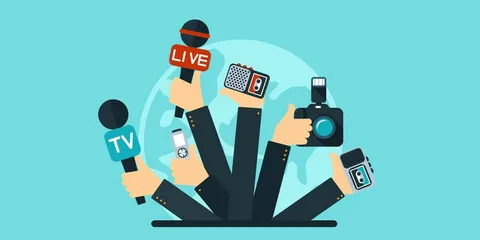
Media has always played a crucial role in shaping public perception. From Martin Luther’s pamphlets during the Protestant Reformation to Donald Trump’s tweets in modern-day politics, the media has been a powerful tool for communicating ideas and influencing public opinion.
Martin Luther used the printing press, a relatively new invention in the 15th century, to spread his ideas widely. Before the printing press, the Catholic Church had a monopoly on religious information, which was primarily disseminated through handwritten manuscripts in Latin, a language understood by few. Luther’s decision to translate the Bible into German and print pamphlets in the vernacular allowed more people to access religious texts directly. This democratization of information was revolutionary. It enabled Luther, who has been dubbed the first Best Seller, to reach a broader audience and effectively challenge the church’s authority.
Luther’s pamphlets were not just theological arguments; they were also written in a way that appealed to common people. He used straightforward and picturesque language along with the visual and emotional power prints, engravings, woodcuts, and drawings provided in communicating his message. This approach made his ideas accessible and relatable to the large percentage of illiterate people, thus garnering wider support. The rapid spread of his writings created a network of supporters who could discuss and disseminate his ideas further, leading to a significant shift in religious beliefs and practices.
In a similar way, Donald Trump’s use of social media, particularly Twitter, revolutionized modern political communication. Unlike traditional media, which is often filtered through editors and journalists, social media allows for direct communication between public figures and their audiences. Trump’s tweets were immediate, unfiltered, and often provocative. This direct line of communication allowed him to bypass traditional media channels that he frequently criticized as biased or “fake news.”
Trump’s tweets covered a wide range of topics, from policy announcements to personal opinions. His use of social media created a constant stream of news, keeping him in the public eye and driving the news cycle. This strategy kept his supporters engaged and allowed him to set the agenda. Like Luther’s pamphlets, Trump’s tweets were written in a straightforward, sometimes blunt style that resonated with many people who felt disconnected from the traditional political discourse.
Both Luther and Trump faced significant backlash for their use of media. Luther’s writings were condemned by the Catholic Church, and he was excommunicated and declared an outlaw. Despite this, his ideas continued to spread, leading to the establishment of Protestantism. Trump’s tweets often sparked controversy and were the subject of intense scrutiny by the media and political opponents. However, his ability to communicate directly with the public helped him maintain a strong base of support.
The use of media by both Luther and Trump highlights the power of direct communication in shaping public perception. By bypassing traditional gatekeepers, they were able to reach a broader audience and mobilize support more effectively. This direct communication also allowed them to control their narratives and respond quickly to criticism.
In conclusion, media plays a vital role in shaping public perception and can be a powerful tool for challenging established authorities. Martin Luther’s pamphlets and Donald Trump’s tweets are prime examples of how media can be used to spread ideas, engage supporters, and influence public opinion. Their strategies demonstrate the media’s enduring impact on societal change and the importance of direct communication in modern political and religious movements.